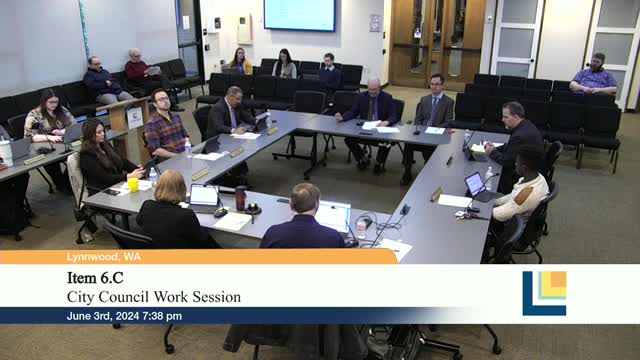City launches ambitious plan to revitalize aging infrastructure
June 03, 2024 | Lynnwood, Snohomish County, Washington

This article was created by AI summarizing key points discussed. AI makes mistakes, so for full details and context, please refer to the video of the full meeting. Please report any errors so we can fix them. Report an error »

During a recent government meeting, officials outlined the critical state of local infrastructure maintenance and investment programs, emphasizing the need for enhanced funding to address deteriorating roads and sidewalks.
The discussion highlighted three primary areas of focus: routine maintenance, capital reinvestment programs, and major infrastructure projects. Routine maintenance includes essential tasks such as filling potholes, fixing signs, and repainting road markings. Currently, a team of five crew members is responsible for maintaining 100 centerline miles of streets, a number that has remained stagnant since the 1980s, with only one additional crew member added in recent years.
The capital reinvestment program aims to address infrastructure that has reached the end of its life cycle. This includes pavement overlays and the repair of broken sidewalks. Officials noted that the current funding levels for these programs have not kept pace with inflation, resulting in a budget that has remained around $4 million for several bienniums. The funding for crew salaries has also stagnated, capped at approximately $2 million for over two decades.
A significant concern raised was the pavement management strategy, which is crucial for maintaining the longevity of roadways. Currently, the funding allows for the resurfacing of only about one mile of road per year, which is insufficient given the 100 miles of road needing attention. Officials warned that without increased investment, the condition of the roads will continue to decline, leading to more costly repairs in the future.
The meeting concluded with a commitment to further explore pavement management strategies and the need for a comprehensive review of funding mechanisms to ensure the sustainability of local infrastructure.
The discussion highlighted three primary areas of focus: routine maintenance, capital reinvestment programs, and major infrastructure projects. Routine maintenance includes essential tasks such as filling potholes, fixing signs, and repainting road markings. Currently, a team of five crew members is responsible for maintaining 100 centerline miles of streets, a number that has remained stagnant since the 1980s, with only one additional crew member added in recent years.
The capital reinvestment program aims to address infrastructure that has reached the end of its life cycle. This includes pavement overlays and the repair of broken sidewalks. Officials noted that the current funding levels for these programs have not kept pace with inflation, resulting in a budget that has remained around $4 million for several bienniums. The funding for crew salaries has also stagnated, capped at approximately $2 million for over two decades.
A significant concern raised was the pavement management strategy, which is crucial for maintaining the longevity of roadways. Currently, the funding allows for the resurfacing of only about one mile of road per year, which is insufficient given the 100 miles of road needing attention. Officials warned that without increased investment, the condition of the roads will continue to decline, leading to more costly repairs in the future.
The meeting concluded with a commitment to further explore pavement management strategies and the need for a comprehensive review of funding mechanisms to ensure the sustainability of local infrastructure.
View full meeting
This article is based on a recent meeting—watch the full video and explore the complete transcript for deeper insights into the discussion.
View full meeting
